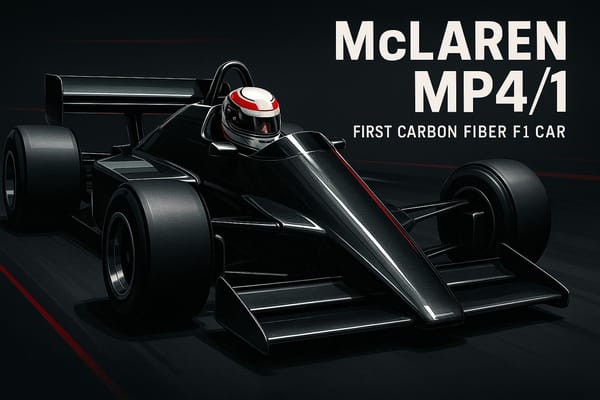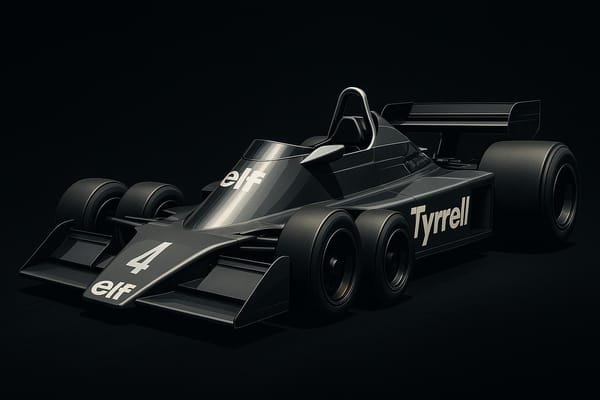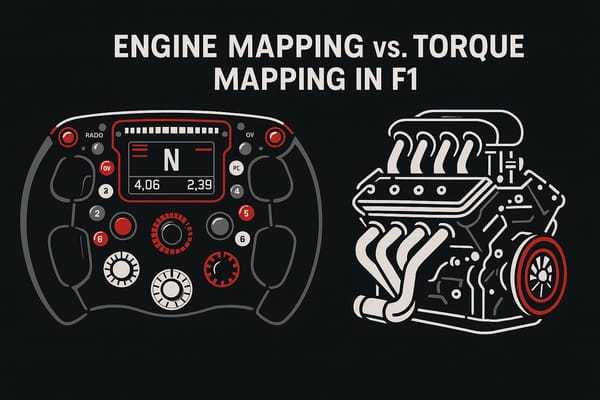Red Bull Ring Breakdown: Austria’s Rollercoaster of Speed, Strategy, and Slipstreaming
Explore the thrilling dynamics of the Red Bull Ring, from its high-speed layout to strategic challenges faced by teams and drivers.
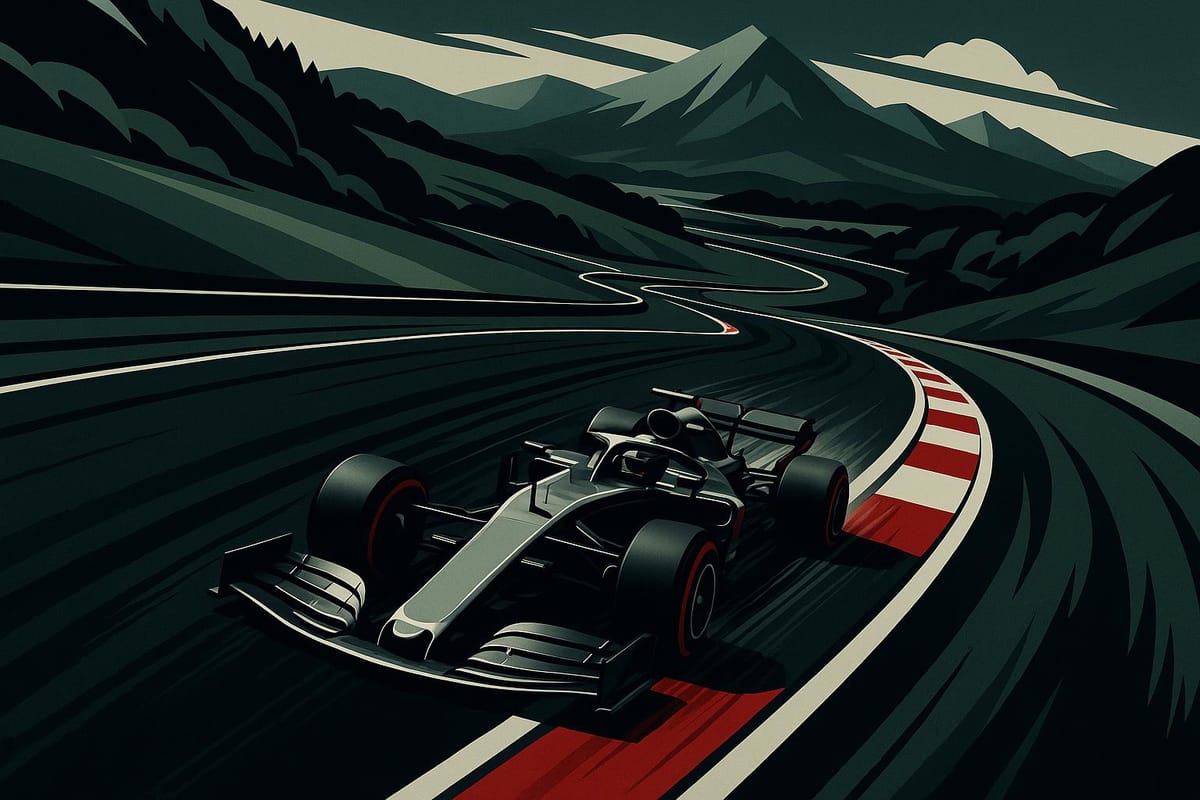
Want to know why the Red Bull Ring is one of Formula 1's most thrilling tracks? Here's the quick rundown:
- Fastest Track: The Red Bull Ring boasts an average speed of 113.8 mph, making it the fastest circuit on the F1 calendar.
- Challenging Layout: Just 2.68 miles long, it combines 10 corners, 208 feet of elevation changes, and 39% of each lap at full throttle.
- Strategic Complexity: With three DRS zones, unpredictable Alpine weather, and tough tire wear, teams face constant tactical decisions.
- Rich History: Originally the Österreichring, it evolved through redesigns, including the modern Red Bull Ring, which reopened in 2011.
This track is where speed meets precision, and every lap is a test of driver skill and team strategy. Let’s dive into what makes the Red Bull Ring a standout on the F1 calendar.
The Truth About the Red Bull Ring – What F1 Lost in Austria
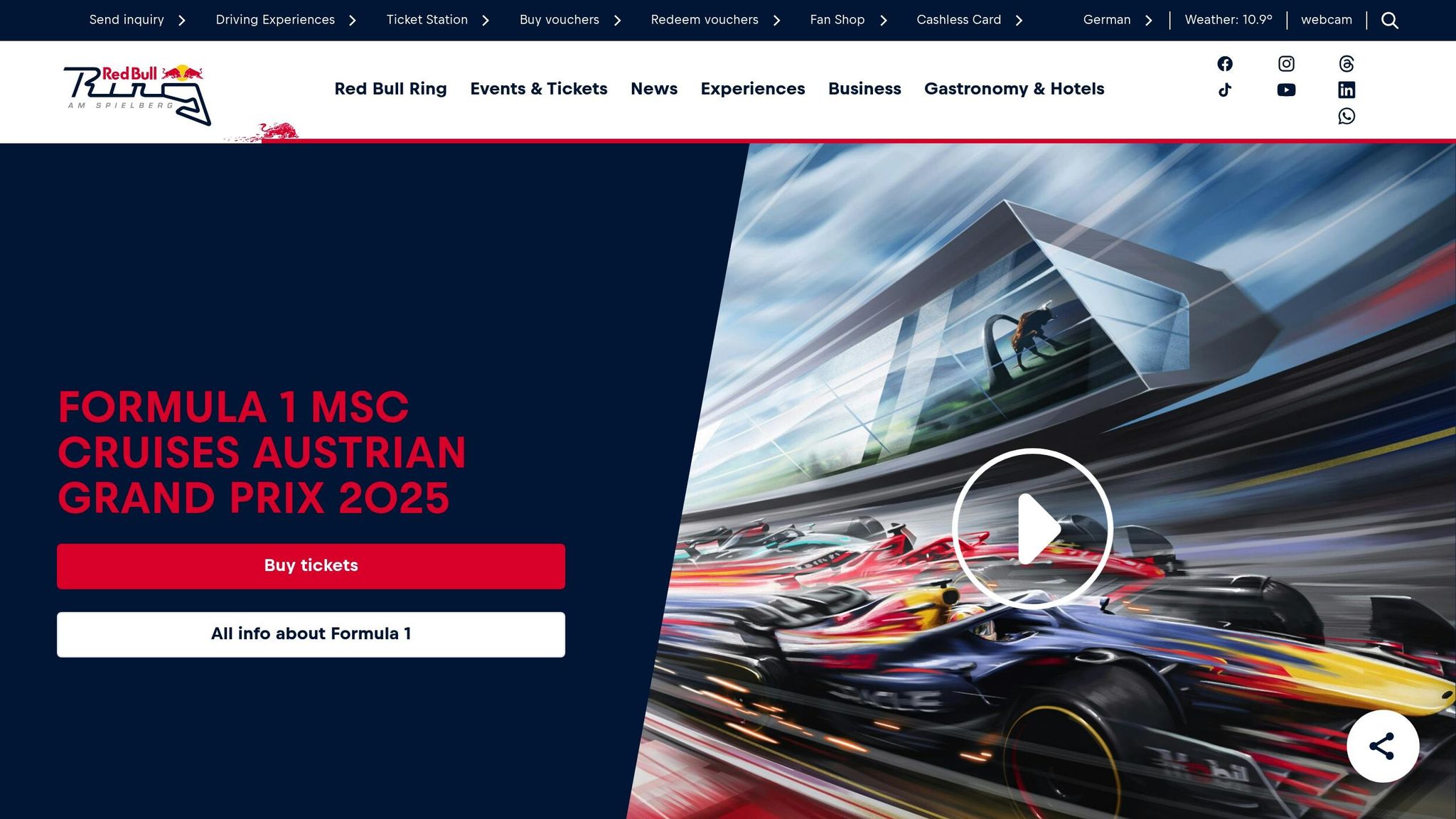
Red Bull Ring History: From Österreichring to Modern Track

Austria’s most iconic racing venue has a history as thrilling as the races it hosts. It all began in 1969 with the creation of the Österreichring, a replacement for the perilous Zeltweg Airfield circuit. From its inception, this Alpine track was designed to elevate Austria's status in the motorsport world, and over the decades, it has undergone significant transformations to keep up with the demands of safety and racing excitement.
The original Österreichring was a beast of a track. Measuring 3.69 miles, it featured high-speed corners and dramatic elevation changes that pushed drivers and their machines to the limit. Between 1970 and 1987, it was the home of the Austrian Grand Prix, offering fans edge-of-the-seat action. In 1987, Nelson Piquet set a jaw-dropping pole position lap at an average speed of 159.457 mph, a testament to the track’s blistering pace.
"At Zeltweg, down the long straight to the Bosch Kurve, the car was throwing out 1400 bhp and just kept on pushing – you felt like you were sitting on a rocket." - Gerhard Berger
But as thrilling as it was, the Österreichring's design became a growing concern. The narrow 33-foot-wide start-finish straight and limited run-off areas made it increasingly unsafe, especially as cars became faster. By the late 1980s, it was clear that changes were unavoidable.
Major Track Changes Over Time
The evolution from the original Österreichring to the modern Red Bull Ring reflects a complete overhaul of the circuit’s character. Each iteration brought new challenges and opportunities for drivers, fundamentally altering how races unfolded.
| Circuit Version | Years | Length | Turns | Key Features |
|---|---|---|---|---|
| Österreichring (Original) | 1969–1976 | 3.67 mi | 16 | Sweeping, high-speed layout |
| Österreichring (Hella Licht chicane) | 1977–1987 | 3.69 mi | 18 | Added chicane for safety |
| Österreichring (Bosch Kurve modified) | 1988–1995 | 3.64 mi | 18 | Adjusted corner layout |
| A1-Ring | 1996–2004 | 2.69 mi | 9 | Shortened, modernized by Hermann Tilke |
| Red Bull Ring | 2011–Present | 2.68 mi | 10 | Updated for modern safety standards |
The turning point came in the mid-1990s when Hermann Tilke reimagined the circuit as the A1-Ring. The redesign drastically shortened the track from 3.69 miles to 2.69 miles, creating a more compact layout. While safer, the new design divided opinions. Some, like four-time world champion Alain Prost, felt the original track’s essence was lost, arguing that improvements to run-off areas could have preserved its character.
In 2004, the circuit’s fortunes changed when Dietrich Mateschitz, the founder of Red Bull, took ownership. After extensive renovations, the track reopened on May 15, 2011, as the Red Bull Ring. This new chapter brought state-of-the-art facilities while keeping the spirit of the original alive.
More recently, in January 2022, a chicane was added specifically for motorcycle racing. This adjustment created a unique 2.70-mile configuration tailored to the needs of two-wheeled competition.
Each of these changes not only improved safety but also reshaped how teams and drivers approached the circuit, setting the stage for its current form.
The Spielberg Location
Nestled in the heart of the Styrian Alps, near Spielberg, the Red Bull Ring is as much about its stunning surroundings as it is about racing. Sitting over 2,000 feet above sea level, the circuit presents unique challenges for teams. The thinner air impacts engine performance and aerodynamics, forcing teams to adapt their setups.
Adding to the complexity, the Alpine weather is famously unpredictable. A sunny morning can quickly give way to a sudden thunderstorm, making tire strategy and race planning a constant juggling act. The mountains also act as a natural amphitheater, amplifying the roar of engines and creating a distinctive atmosphere for fans and drivers alike.
These conditions aren’t just quirks - they’re critical factors that shape how teams approach race weekends at the Red Bull Ring. With its rich history and unique challenges, this track remains a standout in the world of motorsport.
Track Layout: High-Speed Circuit Analysis
The Red Bull Ring packs a lot of action into its 2.68-mile stretch of Alpine terrain. Known for its mix of high-speed straights and challenging corners, this circuit tests drivers with dramatic elevation changes, where precision and raw speed are equally critical.
Track Design and Elevation Changes
One of the defining features of the Red Bull Ring is its 208-foot elevation change spread across 10 corners. With gradients reaching as steep as 12% uphill and 9.3% downhill, the track offers a unique, three-dimensional racing experience that directly impacts car dynamics.
Take Turn 3, for example. Drivers approach uphill, only to face a sudden downhill exit that can unsettle the car’s balance. These constant shifts force teams to carefully tune suspension setups, ensuring the car remains stable through the ever-changing forces. The elevation doesn’t just affect handling - it also influences braking. Uphill sections help shorten braking distances, while downhill segments demand earlier and more controlled braking. At Turn 1, for instance, cars slow from 205 mph to just 43 mph in 2.5 seconds, generating an intense 5.5 G of force.
"It's got a combination of corners – being on the hill, it's always quite exposed to the wind, so you get these moments where it catches you out." – George Russell
Adding to the challenge, the track sits nearly 2,300 feet above sea level, making it the highest European track on the F1 calendar. This altitude affects engine performance and aerodynamic efficiency, adding another layer of complexity for teams to navigate.
Speed and Downforce Requirements
The Red Bull Ring is a high-speed haven, with drivers spending 79% of each lap at full throttle. To maximize straight-line speed, teams opt for low-to-medium downforce setups, balancing speed on the track’s longest flat-out section - measuring 2,850 feet - while still maintaining enough grip for its technical corners.
Turn 9, for example, subjects drivers to forces of up to 5.2 G, while other corners consistently range between 4.5 and 5.2 G. The track’s elevation changes also play a role in aerodynamics; uphill sections naturally increase front downforce, while downhill stretches shift the balance toward the rear. This constant interplay forces teams to fine-tune their setups to ensure the car performs consistently across the lap.
Recent Track Measurement Changes
In recent years, updated surveying methods have confirmed the Red Bull Ring’s length at 2.686 miles (4.326 km), a refinement made when the circuit rejoined F1 in 2014. While the change might seem minor, even a few yards can impact strategies, from lap time predictions to fuel calculations and tire management.
The updated measurements have also improved corner mapping, with each turn now precisely analyzed for gradient, radius, and banking. For instance, engineers can now optimize settings for specific sections, such as Turn 6 (Rauch), Turn 7 (Würth Kurve), and Turn 9 (Rindt), where engine braking plays a critical role. This level of precision allows teams to fine-tune differential settings and suspension geometry, making every lap a calculated effort. These detailed insights highlight why the Red Bull Ring is known for its strategic demands as much as its high-speed thrills.
Overtaking Zones and Slipstreaming Effects
The Red Bull Ring's layout is a playground for overtaking, offering thrilling opportunities for drivers to battle it out on track. With three consecutive DRS zones and dramatic elevation shifts, this circuit is built for edge-of-your-seat, wheel-to-wheel action that keeps fans glued to the race.
Main Overtaking Locations
Turn 1, also known as the Niki Lauda Kurve, is a prime spot for overtakes. Positioned at the top of a hill, drivers approach it after blasting down the main straight at speeds nearing 195 mph. The sharp braking zone here creates a perfect chance for trailing cars to pounce, especially with the 330-meter (about 1,083-foot) run from pole position to the corner offering ample room to exploit slipstream advantages.
"From your seat, you'll have a clear line of sight to the Pit Lane exit and the rapid Main Straight, where the cars reach top speed before braking hard into the first corner."
Turn 3, known as AMS AG Turn, is another hotspot for overtaking. This corner has seen its fair share of drama, like Max Verstappen's unforgettable move on Charles Leclerc during the 2019 race, where he used the DRS zone leading into the turn to set up a decisive pass. But it's not all glory here - Turn 3's technical demands can punish mistakes. The 2016 Austrian Grand Prix saw Lewis Hamilton and Nico Rosberg collide in a high-stakes battle at this very spot.
The action doesn't stop there. Turn 4, working in tandem with Turn 3, forms a high-speed double-apex section where elevation changes keep drivers on their toes. Constantly adjusting their lines, racers find opportunities to outmaneuver rivals, making this stretch a critical part of the circuit. These corners also play a big role in team strategies around tire and fuel management, which we’ll explore in later sections.
Recent updates to regulations in 2022 have breathed new life into the final corners, Turns 9 and 10. These high-speed bends now see regular overtaking, as evidenced by Mick Schumacher’s bold move on his teammate into Turn 9 during the 2022 race. Here, success often depends on car balance and tire management rather than just slipstreaming, adding another layer of strategy.
All these overtaking zones highlight the importance of aerodynamic tools in modern racing.
Slipstreaming and DRS Usage
The Red Bull Ring’s DRS setup is a game-changer for overtaking. With three DRS zones in play, slipstream effects are amplified, and over 80% of passes on this track rely on aerodynamic assistance.
The DRS zones are strategically placed: along the main straight, leading into Turn 3, and down the back straight toward Turn 4. This layout allows drivers multiple chances within a single lap to build the speed differential needed to overtake. The circuit’s elevation changes add another layer of complexity, influencing airflow around the cars and requiring teams to fine-tune their setups for the perfect balance between aerodynamic efficiency and mechanical grip.
"The track lends itself to a lot of overtaking, so I'm sure it will be an exciting race." - Max Verstappen
With these tools and opportunities in place, the Red Bull Ring delivers racing that’s as strategic as it is thrilling.
Team and Driver Strategies for Red Bull Ring
The Red Bull Ring presents a unique challenge for teams and drivers. Sitting nearly 2,300 feet above sea level, the circuit combines rapid elevation changes with high-speed sections, testing both mechanical reliability and tactical decision-making. Success here often separates the prepared from the rest.
Tire and Fuel Management
At 2.68 miles long, the Red Bull Ring demands careful tire management. Teams must strike a balance between pushing for speed and preserving tires, as wear patterns evolve over the course of a race. A common approach is a one-stop strategy, using a medium–hard tire combination to maintain track position while managing degradation.
"The medium compound goes through three phases around this circuit, with the front tyres being the limiting factor due to understeer early on, then the rears starting to degrade, initially balancing the car, before then the rears become a problem."
– Chris Medland, Special Contributor
The 2024 Austrian Grand Prix highlighted these challenges. George Russell clinched victory with a Medium–Medium–Hard strategy, showcasing how effective tire management can outweigh outright speed. Meanwhile, Oscar Piastri’s second-place finish came from a well-timed Medium–Hard–Medium undercut, proving the importance of pit stop timing and tire selection.
Sprint races also play a critical role in refining strategies. Teams gather real-world data on tire degradation, which helps them fine-tune their plans for the main race.
Fuel management is another key factor. Teams often run cars slightly under-fueled, relying on techniques like lift-and-coast - especially in sections where elevation changes naturally ease braking. This allows aggressive setups without compromising fuel efficiency.
Beyond tires and fuel, managing engine temperature and cooling is just as crucial at the Red Bull Ring.
Cooling and Engine Considerations
The circuit’s altitude creates additional challenges for cooling and engine performance. Thinner air reduces cooling efficiency, forcing teams to make adjustments like opening brake ducts, air intakes, and rear bodywork. While these changes improve cooling, they also increase drag and reduce aerodynamic efficiency.
"All the air-dependent systems, whether it's brake cooling, engine cooling, gearbox, are going to struggle."
– Paul Monaghan, Chief Engineer
Mercedes faced notable difficulties in 2019, needing to open cooling outlets more aggressively than competitors like Ferrari and Red Bull due to their tighter car design philosophy. Brake systems are also reconfigured, often with specific carbon disc and pad combinations to counter the thinner air. The circuit’s 208 feet of elevation change further complicates cooling, as variable air densities affect system performance.
To manage thermal loads during prolonged acceleration on the short straights, teams may limit engine modes, carefully balancing power output with temperature control. These adjustments often prove decisive in determining race outcomes.
Past Race Strategy Examples
The Red Bull Ring has a history of races where strategic execution made all the difference. In the 2024 Austrian Grand Prix, Max Verstappen and Lando Norris both pitted on lap 52 for medium tires. However, a slight delay during Verstappen’s stop reduced his lead, leading to contact with Norris and forcing an unplanned Medium–Hard–Medium–Soft strategy.
Charles Leclerc’s race that year underscored the importance of a clean start. Early wing damage disrupted Ferrari’s strategy, resulting in multiple unscheduled stops that derailed their planned tire sequence.
The 2023 Austrian Grand Prix reinforced the value of two-stop strategies using medium and hard tires. Notably, no driver opted for soft tires, reflecting the compound’s limited durability on this demanding track.
"For the past two editions of this race, the two-stop strategy proved quickest, running the medium and hard tyres, and last year, no driver gambled on the softs."
– Pirelli
History also shows the importance of adaptability. In the 1999 Austrian Grand Prix, a collision between McLaren teammates Mika Häkkinen and David Coulthard handed Eddie Irvine the lead, allowing him to secure victory. This moment serves as a reminder that even the best-laid plans can be upended by the unexpected.
These examples highlight the complexity of racing at the Red Bull Ring. Success demands not just the right tire choices, but also flawless execution, flexibility under changing conditions, and the ability to seize opportunities when rivals falter.
Race Highlights and Tactical Examples
At the Red Bull Ring, strategic tire and fuel management often set the stage, but it's the drivers' skill and tactical decisions that truly bring race strategies to life. Some unforgettable moments here demonstrate how on-track brilliance can reshape a race.
Top Driver Performances
Max Verstappen's incredible drive at the 2022 Austrian Grand Prix is a prime example of how tactical precision can overcome setbacks. Starting 14th on the grid due to penalties, Verstappen sliced through the field with calculated use of DRS (Drag Reduction System), taking the lead in just 12 laps. His performance was so impactful that the FIA decided to shorten the DRS zone for the following season.
To put it into perspective, DRS boosts top speed by about 6–7 mph on straights, providing a crucial edge for overtaking. Verstappen's ability to maximize this tool underlined how small tactical decisions can have massive implications during a race, especially on a track as dynamic as the Red Bull Ring.
Race-Changing Tactical Calls
The Red Bull Ring has seen its fair share of pivotal tactical decisions, with DRS often at the center of the action. Teams meticulously tailor their car setups and race strategies to make the most of DRS, which has a significant influence on driver positioning and race outcomes.
"DRS is there to aid overtaking and it's always exciting when you've got these big DRS advantages, and it gives you the opportunity to fight." - George Russell
However, DRS isn't a guaranteed game-changer. Verstappen himself has pointed out the difficulties of being stuck in a "DRS train", where multiple cars in a line all benefit from the system, making overtaking far more challenging.
"DRS was developed so that if the car was around half a second to a second faster behind, it would be able to overtake, and I don't think we want a slower car being able to overtake a faster car." - Alan Permane, Alpine's Sporting Director
These insights highlight the complexity of using DRS effectively. At the Red Bull Ring, with its mix of high-speed straights, elevation changes, and multiple overtaking zones, drivers must balance aggressive DRS usage with careful race management. It's a track that rewards precision and adaptability, demanding a perfect blend of strategy and skill.
Conclusion: Red Bull Ring Racing Dynamics
The Red Bull Ring is unlike any other Formula One track, offering teams a unique set of challenges thanks to its high-altitude location. Its compact 10-turn layout might seem straightforward, but it demands everything from both drivers and their cars. Drivers spend approximately 79% of each lap at full throttle, with the longest uninterrupted stretch spanning about 2,848 feet.
These physical traits heavily influence strategy. The track’s dramatic 208-foot elevation change and gradients as steep as 12% add layers of complexity. Teams must also contend with the circuit’s exposed hilltop location, where sudden wind shifts and unpredictable weather often come into play. Balancing setups becomes a fine art, as teams juggle the demands of technical corners, long straights, and the challenges of maintaining cooling and aerodynamic efficiency in thinner mountain air.
Adaptability is the key to mastering the Red Bull Ring. The short lap length increases the likelihood of traffic and track-limit penalties, while the ever-changing weather keeps teams on their toes. Precision in strategy and setup is non-negotiable, as even the smallest misstep can make the difference between victory and defeat. Every race here transforms into a high-stakes chess match, where speed and strategy are equally vital. This dynamic blend of challenges is what makes the Red Bull Ring an unforgettable part of the Formula One calendar.
FAQs
How does the altitude of the Red Bull Ring impact car performance and team strategies during a race?
The Red Bull Ring, nestled in Austria’s high-altitude terrain, introduces unique challenges that directly influence how cars perform and how teams strategize. The thinner air at these elevations has two major effects: it reduces aerodynamic downforce and engine power. On the upside, less drag means cars can achieve higher top speeds. However, the downside is that engines struggle to pull in enough oxygen, which can sap their power output.
To tackle these conditions, teams make specific adjustments to their car setups. They focus on tweaking aerodynamics to compensate for the reduced downforce and fine-tuning engine mappings to make the most of the available power. These changes add a layer of complexity to race strategies, making altitude a critical factor at this fast-paced and technically demanding circuit.
Why is the Red Bull Ring in Austria considered a tough challenge for drivers and teams?
The Red Bull Ring is a challenging track, known for its short 2.68-mile (4.318 km) lap and just 10 corners. These features demand precise driving and careful speed control, especially through its tight turns. Adding to the difficulty are the steep elevation changes, which put both car setups and driver skills to the test, particularly when it comes to braking and maintaining traction.
The circuit's narrow design makes overtaking a real challenge, placing even more emphasis on strategic positioning and tire management throughout the race. These factors push teams and drivers to think on their feet, blending technical know-how with sharp race strategies to conquer this high-speed, rollercoaster-like track.
How have changes to the Red Bull Ring over time impacted race strategies and results?
The transformation of the Red Bull Ring, notably its reduction in length from 3.69 miles to 2.69 miles in 2011 and the shift from sweeping corners to tighter turns, has significantly influenced race strategies. These modifications have not only boosted overtaking opportunities but also improved safety, requiring teams to meticulously adjust car setups to handle the track's demanding technical corners and steep elevation changes.
More recent tweaks to the layout have further amplified overtaking possibilities, making slipstreaming and strategic tire choices even more crucial. As a result, teams now approach the circuit with a heightened focus on precision and adaptability, aiming to maximize performance on race day.
Related posts
- How Teams Adapt Aerodynamics for Spa and Monza
- Albert Park Uncovered: The History, Evolution, and Challenges of the Australian Grand Prix Circuit
- Shanghai International Circuit: A Technical Masterpiece Behind the Chinese Grand Prix
- Suzuka’s Legacy: How Japan’s Iconic Figure-8 Circuit Became a Driver Favourite

